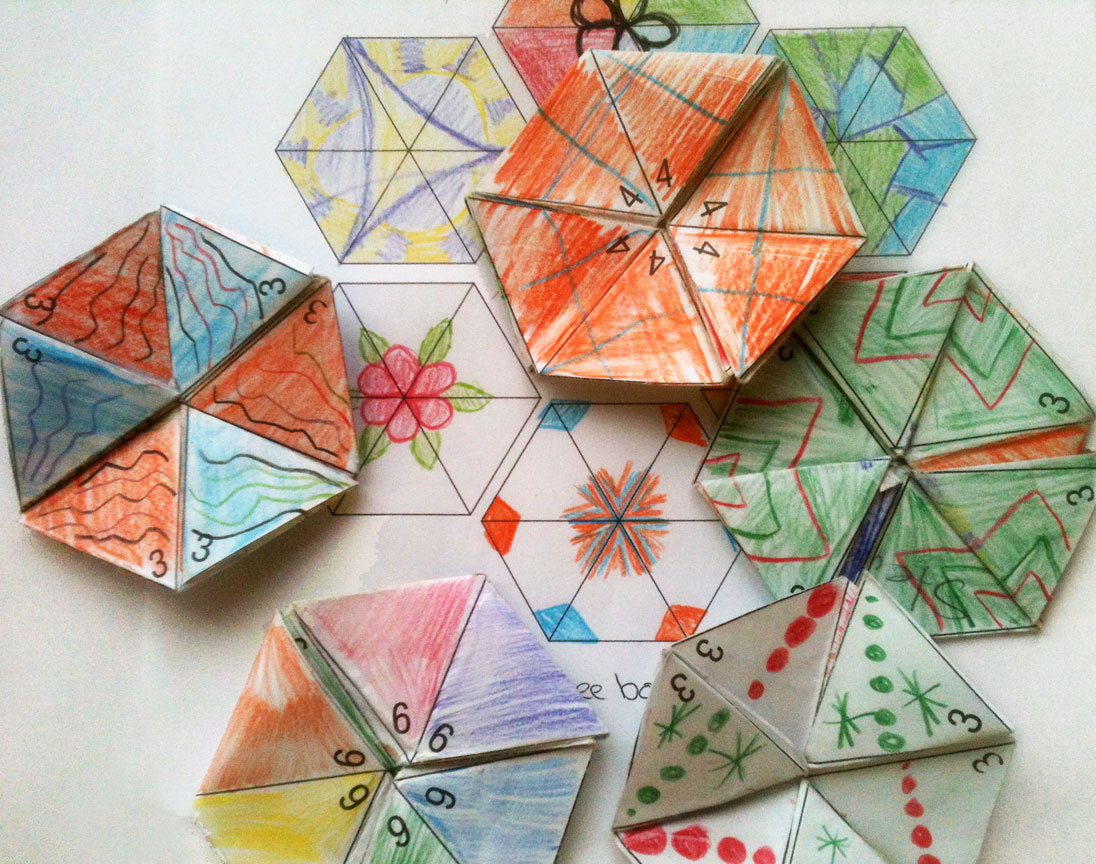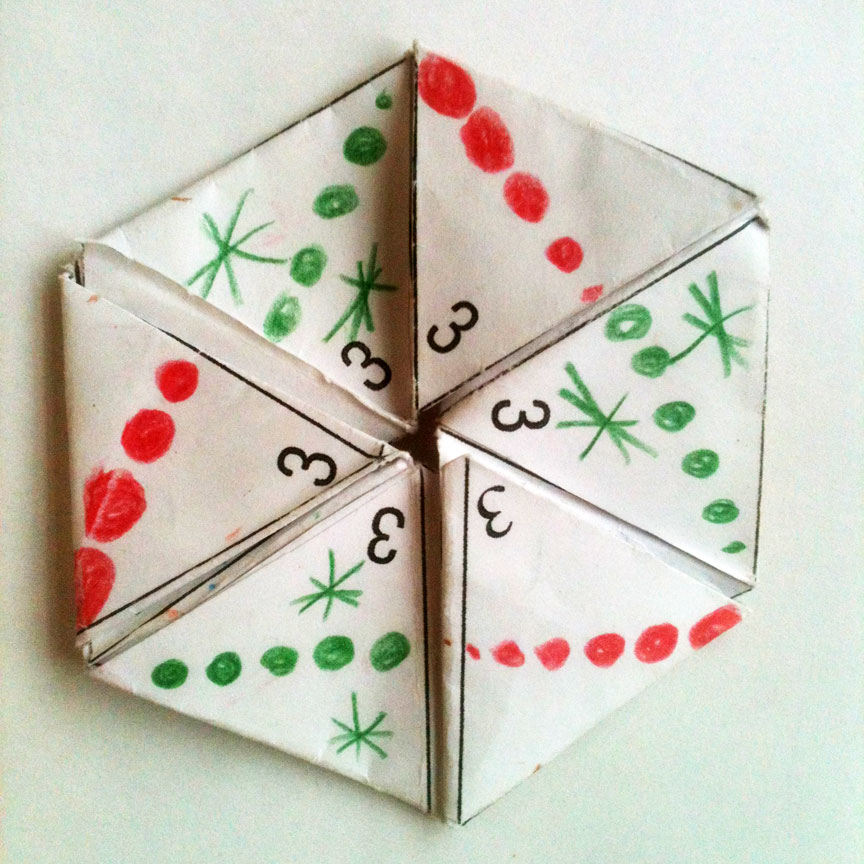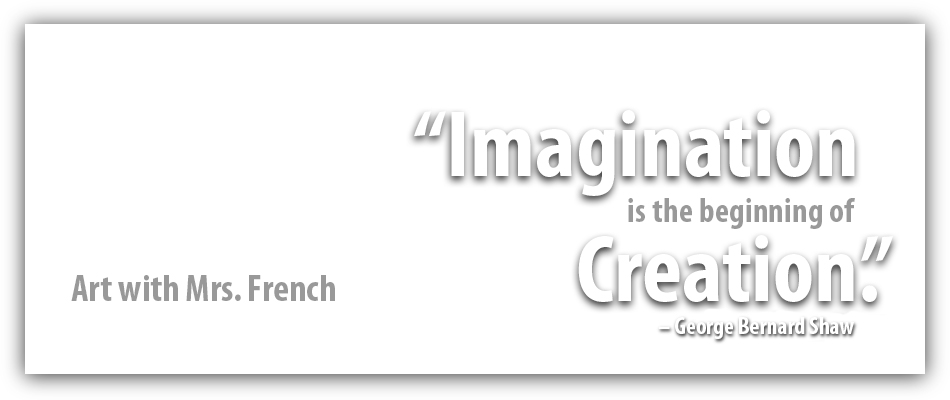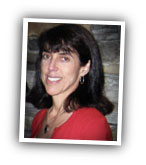HexaHexaFlexogon Fun
 Monday, March 10, 2014 at 11:14AM
Monday, March 10, 2014 at 11:14AM Our 6th and 7th grade classes combined math and art concepts to create these paper HexaHexaFlexogons. They are called that because they have six, six-sided faces made from equilateral triangles within them and you must flex and manipulate the hexagons to view all sides. Because as you flex them, the triangles rotate their positions within each face, there are actually 14 different configurations to view in each flexagon. Click here for an interesting video which explains how HexaHexaFlexagons were invented. Students reviewed the color wheel and designed each face to show the six primary and secondary colors, warm colors, cool colors and three complementary color designs. Below are a few of the flexas they created.





Reader Comments